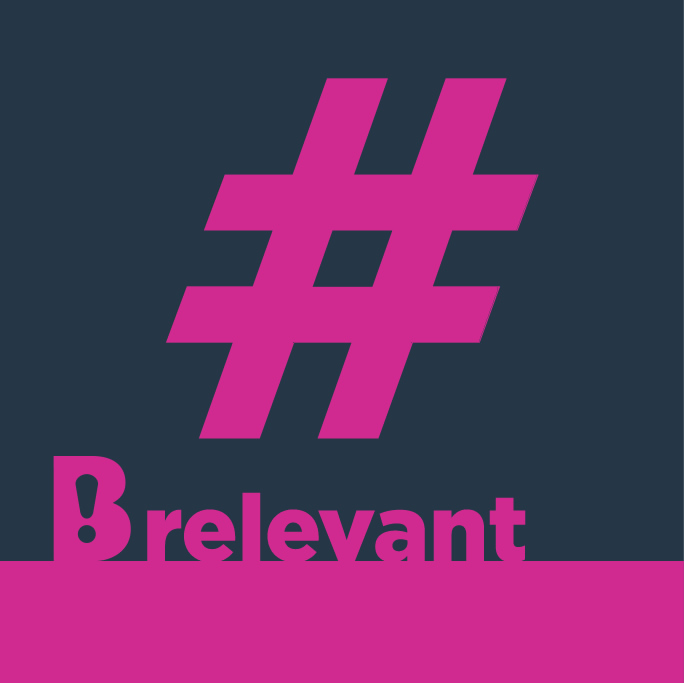In an ever-changing market landscape, relevance is the key to keeping your brand connected with its audience. There’s a common misconception that ‘being relevant’ is just about following trends, but it’s actually about understanding your brand’s identity and values, alongside the evolving needs of your consumers. As a strategic design agency, we believe that relevance stems from a deep connection between brand strategy, consumer insights, and market dynamics. It’s about knowing when to adapt and when to stay true to your core – because not every opportunity is the right one.

What does it mean to B! Relevant?
To B! Relevant is to listen to both your brand’s voice and your consumer’s needs. Insights are crucial (we love them, in fact) – they form the foundation of any great strategy. But insights alone aren’t enough. True relevance comes from synthesizing these insights with your brand’s identity, ensuring that every decision, from product development and product packaging design to marketing campaigns and product shelf appeal, aligns with both your brand’s essence and market expectations.
In today’s crowded marketplace, it’s easy to fall behind or get lost in the noise. Brands that thrive are those that not only understand what their consumers want but also anticipate where the market is heading. This forward-thinking approach requires more than just being reactive; it demands a proactive stance on consumer product design, ensuring that your offers remain culturally, emotionally, and practically relevant.
The Power of Relevance in Branding
Relevance is about making strategic choices and leveraging consumer insights. It’s knowing when to embrace new opportunities and when to say no to those that don’t align with your brand. This kind of discipline is essential for sustaining long-term growth and keeping your brand relevant in the eyes of your consumers.
Why? Because relevance is the bridge between your brand and your audience. When a brand remains relevant, it connects with consumers on a deep level. Whether it’s through food branding, tech innovation, or retail packaging design, maintaining relevance is key to staying top-of-mind in a fast-moving market.
Relevance in the Real world…
Let’s look into some great real-world examples in the FMCG and Digital Entertainment industries, demonstrating the power of relevance when developing a product innovation pipeline that resonates with consumers and considers evolving trends:
Dare Iced Coffee: Responding to Evolving Consumer Preferences
Dare Iced Coffee, an Australian mainstay in the supermarket aisle, demonstrates relevance in action by responding to the growing demand for plant-based alternatives. As consumers increasingly shift towards healthier, more sustainable options, Dare Iced Coffee has positioned itself as a leader by launching a dairy-free Oat Milk SKU to attract lapsed consumers and new consumers to this expanding segment. Through thoughtful drinks packaging design and a clear brand message that aligns with health-conscious consumers, Dare Iced Coffee stays ahead of the curve with its oat milk option, ensuring it remains a top choice on grocery shelves.
The takeaway? Dare Oat Milk’s success shows that relevance is about more than just following trends. It’s about understanding your consumer’s changing needs and delivering a product that aligns with those needs – while maintaining a consistent and appealing brand identity.
Spotify: Personalisation Drives Relevance
Spotify’s relevance comes from its ability to cater to the diverse musical tastes of its users. By leveraging data analytics, the streaming service creates personalised playlists and recommendations that resonate with individual preferences. The “Wrapped” campaign, which offers users a personalised recap of their listening history, taps into this personalisation experience that resonates on an emotional level with its platform users.
The takeaway? Spotlight’s strategy highlights the importance of relevance through personalisation. By making users feel seen and understood, Spotify ensures its platform remains a go-to choice for music lovers, demonstrating the power of consumer brand design in creating a relevant brand experience.
Netflix: Adapting to Viewer Preferences
Netflix’s ability to stay relevant is driven by its focus on viewer preferences and its agility in content creation. By investing in original content and using sophisticated algorithms to recommend shows and movies based on viewing habits, Netflix maintains its relevance across diverse audiences. The streaming platform’s ability to quickly adapt to changing consumer trends, such as the shift from traditional cable to streaming, has been instrumental in its continued growth.
The takeaway? Netflix’s success underscores the importance of being attuned to consumer behaviour and market shifts. Through strategic brand design and innovative content delivery, Netflix continues to evolve while staying true to its core offering.
Closing thoughts: relevance is the lifeblood of brand success.
Being relevant is more than investing in an insight company to tell you where to target, and it’s certainly more than updating your logo. It’s about knowing all facets of the market, and your brand – then knowing when and where to deploy communication that will resonate with the consumer. When you ensure the entire business has the consumer at its core, and adjust accordingly, you’ll be able to make strategic designs that align with your brand while staying attuned to the market’s pulse.
What are B! Rules, again?
At B! Brand, we understand that relevance requires a deep understanding of both the brand and the consumer, and we’re committed to helping our clients digest the insights, understand consumers’ needs and steer a course accordingly.
We’ll continue to unveil a series of 8 rules (or central design principles) that we as a design agency use to turn ideas into reality through distinctive brand assets.
Throughout the series, we’ll delve into each B! Rule, explore its importance, how it influences our work, and how it can be applied to drive brand growth.
Whether you’re looking to refresh your brand, launch a new product, or simply stay ahead of the latest trends, we’re here to guide you every step of the way.
